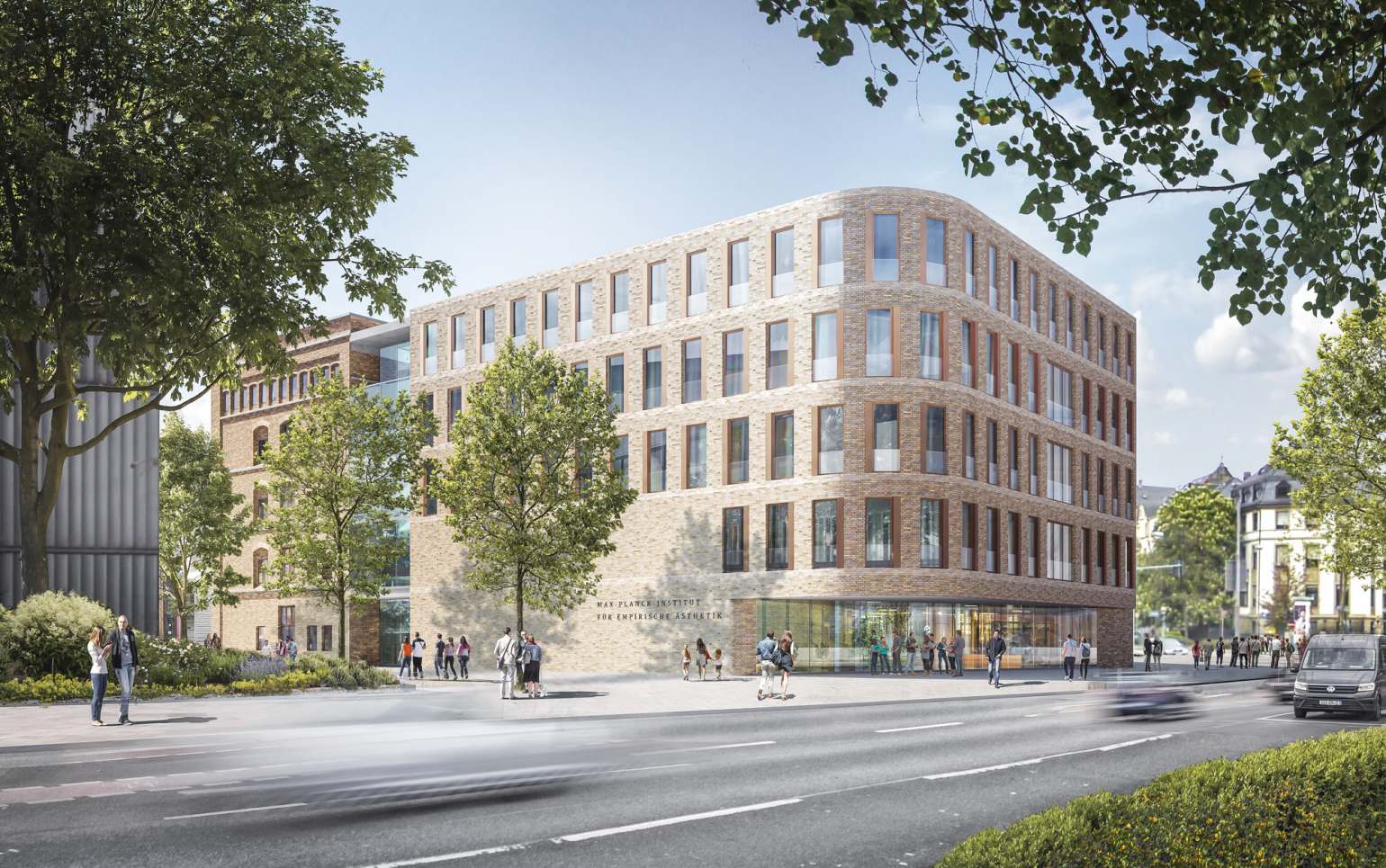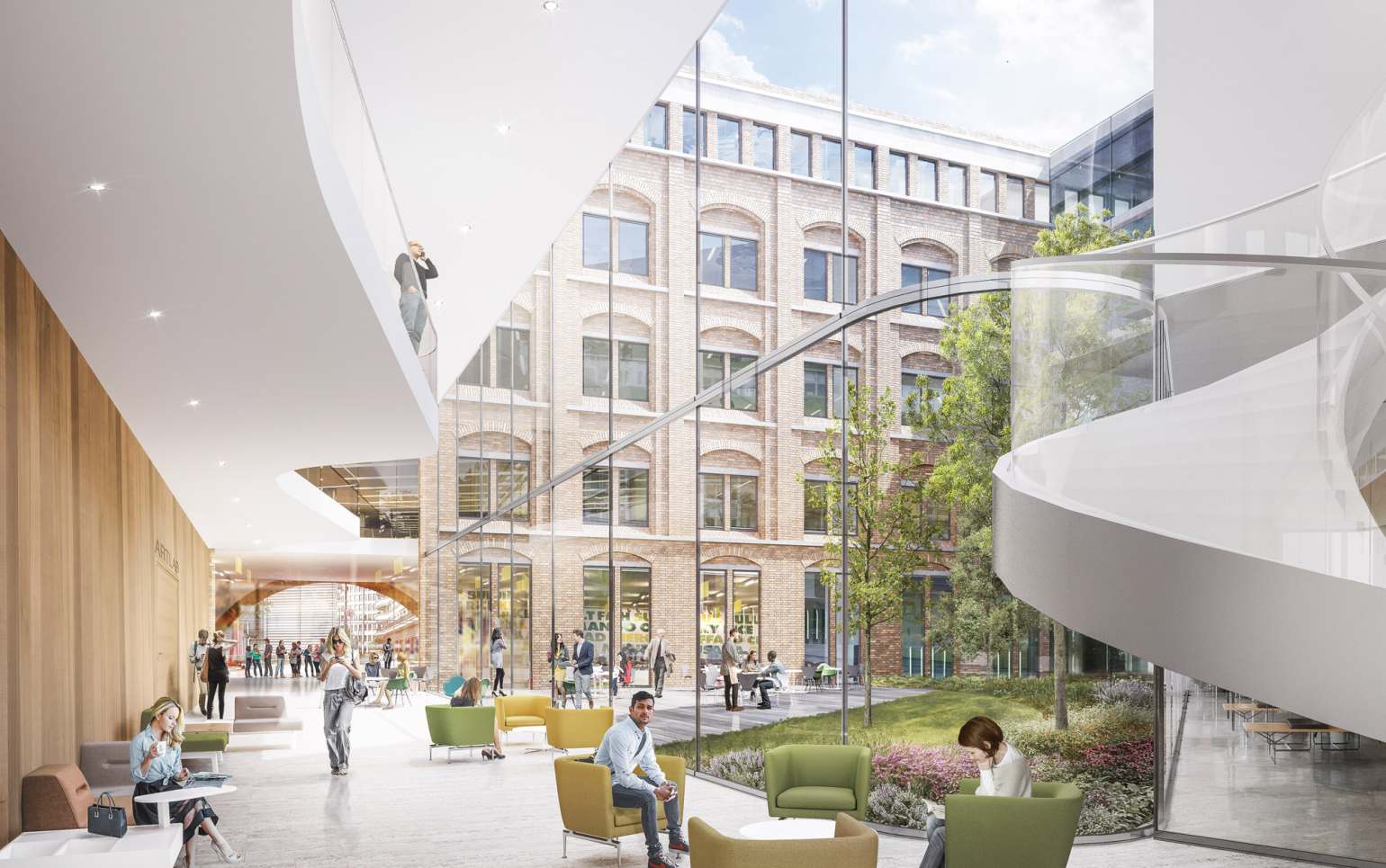Max Planck Institute for Empirical Aesthetics, Frankfurt am Main
Client
Max-Planck-Gesellschaft zur Förderung der Wissenschaften e.V., Munich
Competition 1st prize
2018
Start of planning - Completion
2018 - 2024
Performance Phases
2 - 5
Building Data
Total cost 45,339,000 €
Gross floor area 12,267 m²
The design concept of the new building of the Max Planck Institute for Empirical Aesthetics is characterized by the idea of developing the old and new building as "one" new structural form, which complements the "Kulturcampus Frankfurt" with another "solitaire building". The new structural form is derived from the external geometry of the old printing shop building and tapering parallel to Sophienstrasse. The basic structure of the existing 5-story building is preserved, while adapted for use by the institute and supplemented with a 5-story U-shaped new building. The new building is terraced towards the inner courtyard and opens the courtyard space diagonally towards the light. On the ground floor, the building recedes in order to spatially articulate the entrance situation as well as accentuate the rounded building corner.
The two-story entrance foyer of the institute connects the street space with the center of the campus. As the heart of the institute, it functions as a distribution level for all uses, entrance for the ARTLAB meeting room and access to all common and public functions on the ground floor, such as canteen, cafeteria and library.
The floor plan of the new building shows a ring-shaped arrangement and zoning of offices and laboratories around an inner courtyard. The offices of the research departments are distributed across four floors in the existing building and are directly connected to the laboratory areas and central scientific facilities in the new building. The short path relationships are varied and communicative for an informal exchange between research groups.
The vision of formulating the existing and new structures as "one" is particularly evident in the use of brick as a material in the facade. Vocabulary from the old printing shop building is reinterpreted and aesthetically altered and developed further in the facade design of the new building.
At the interface between the existing and new buildings, stairwells form a glass transition in the building envelope, expressing the interplay of "old and new" in a similar way to the inner courtyard facade clad in glass panels, reflecting the old brick facade. A subtle dialogue between old and new results in the facade geometry, detail design and materiality. The Max Planck Institute’s new building creates a striking presence in the "Kulturcampus” grounds. While this daring combination of old and new raises aesthetic questions, it also reflects the research and interdisciplinarity of the institute.
The attractive interplay between the institute and the renovated Bockenheimer Depot brick building produces an urban planning highlight enlivening the center of the campus.



